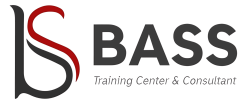
From there, you can take measures to reduce your overhead or, if they aren’t popular with your customer base, remove those products from your catalog. Learn more about what’s included in overhead costs, good overhead percentages, and more with frequently asked questions about overhead costs. Some businesses may choose to bring in a legal expert for routine processes such as reviewing annual documents and looking over advertising or business strategy. These legal costs are fixed and generally comprise only a small part of overhead. Perks can range from variable costs like performance-based bonuses to fixed costs like holiday parties or special events. As an optional cost, they generally represent only a small part of overhead.

What Is Included in the Cost of Goods Sold?

For example, a custom furniture maker treats wood and labor as direct costs. However, electricity to power tools, equipment depreciation, and supervisor salaries all fall under overhead. Managing these costs can be challenging, especially for small business owners or startups without dedicated teams or the capital to run their own facilities long-term.
How to reduce manufacturing overhead cost?

By providing a telephone number and submitting the form, you are consenting to be contacted by SMS text message and agreeing to our Privacy Policy. Cost accountants must remain vigilant, especially when variable costing is used internally for decision-making but absorption costing is used for external reporting. However, this also made Tesla vulnerable to demand shocks (e.g., interest rate hikes or EV subsidy cuts), as its cost base doesn’t flex easily. Manufacturing staff may also pleasantly surprise leaders with ideas they bring to the table. The professionals on the floor likely have thoughts about how the process can run more efficiently, but if leaders never ask, the staff may never talk about it.
How To Categorize Overhead Expenses?
If you work from home, you may also be able to claim a portion of your utilities for your home office. When inventory is artificially inflated, COGS will be under-reported, which, in turn, will lead to a higher-than-actual gross profit margin and hence, an inflated net income. This helps with pricing jobs before you know actual totals but requires adjustments later. Companies need to set prices low enough to attract customers and compete with rivals, but not too low that it becomes impossible to make money. Finding the right balance to maximize revenues and profits requires careful management of overheads.
- When you think about the production cost of a product, the basic components that come to mind might include raw materials and labor.
- This article examines the components of manufacturing costs and their impact on business operations.
- This principle rings true for businesses as much as it does for everyday life.
- It does not include direct labor or direct costs such as raw materials because these amounts can be traced directly back to a single product.
- Manufacturing overhead represents indirect production expenses not directly tied to specific products.
- Cost of goods sold (COGS) represents the direct costs of manufacturing or purchasing the products a company sells, such as materials and labor.
This critical aspect of cost accounting not only contributes to more precise product costing but also enhances profitability analysis and financial management. MOH includes expenses such as indirect labor, indirect materials, utilities, and depreciation of equipment. Struggling to control hidden production costs that eat into your profits? Manufacturing overhead represents the indirect expenses crucial to your operations but often overlooked. This article reveals how to identify, calculate, and optimize these key costs—from facility expenses to depreciation—while aligning with accounting standards.

For instance, by becoming more energy efficient or using less direct labor to produce the same amount of output, you can reduce your labor and energy costs. The difference between fixed, variable, and semi-variable overhead lies in how these costs behave relative to production levels. You can allocate these expenses to products based on your chosen allocation base (e.g., square footage used for production). Accurate tracking of manufacturing overhead what makes up manufacturing overhead allows companies to identify areas for cost reduction and make necessary adjustments to improve profitability. In the B2B manufacturing space, accurately tracking and allocating manufacturing overhead can make or break a company’s profitability. Understanding your overhead expense rate is key to gaining an accurate picture of your business finances.
Why is Cost Variance Analysis Important? – FAQs
- In other cases, legal costs can be variable—for example, if you need to bring in a legal expert to address a merger, lawsuit, or audit.
- Strategic investments in technology, process improvements, and smarter resource allocation pave the way for long-term cost savings and increased profitability.
- By carefully managing overhead expenses, manufacturers can improve efficiency, optimize profitability, and maintain a competitive edge in the industry.
- Changing production methods to better utilise raw materials is another way manufacturer can reduce direct material waste.
Variable costs change in proportion to the volume of goods produced, such as raw materials and some labor costs. Fixed costs, on the other hand, remain unchanged regardless of production levels. Examples include rent and salaried employees not directly involved in production. Direct labor refers to the wages of workers directly involved in the manufacturing process.
In turn, with better analytics, management can achieve better capital use efficiency and return on invested capital, thereby increasing business valuation. When sales increase, manufacturing overhead tends to increase proportionately following the production cost. The importance of a well-implemented inventory management system cannot be overstated in addressing the above-mentioned issues and ensuring financial health and legal compliance for your company.
What Is Manufacturing Overhead? Formula & Costs Explained
For many companies, using a predetermined overhead rate based on direct labor hours or machine hours works well. However, activity-based costing can provide more accurate results for businesses with complex operations. One common method is to use an allocation base, such as Airbnb Accounting and Bookkeeping direct labor hours or machine hours. The idea is to find a metric that correlates with your overhead costs and use it to distribute those costs across your products.
If you only factor in direct costs like materials and labor, you might think you’re making a profit when you’re actually losing money. By including overhead, you get a clearer picture of your true costs and can make smarter business decisions. The term fixed manufacturing overhead refers to all factory overhead costs that do not depend on the production volume of a manufacturing business. As the name implies, these are financial overhead costs that are unavoidable or can be canceled. Among these https://izikhathizokwenzagroup.co.za/2023/02/07/uncovering-fraud-famous-forensic-accounting-cases/ costs, you’ll find things such as property taxes that the government might be charging on your manufacturing facility.
